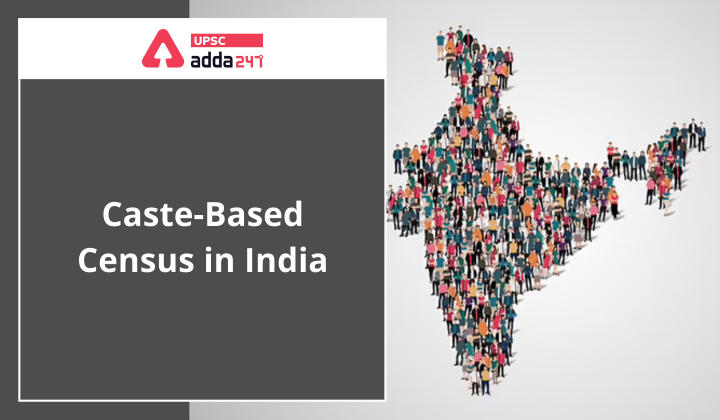Table of Contents
Context
- Recently, Bihar Chief Minister has led a delegation of 10 political parties of the state to meet the Prime Minister of India and demanded a fresh caste census to be made part of the Census 2021 exercise.
- Earlier, the Union Minister of State for Home Affairs indicated that the Government has decided, as a matter of policy, not to enumerate the caste-wise population other than SCs and STs in Census.
 Get free video for UPSC CSE preparation and make your dream of becoming an IAS/IPS/IRS a reality
Get free video for UPSC CSE preparation and make your dream of becoming an IAS/IPS/IRS a reality
Caste Census in Colonial Period
- 1872: First population census conducted in British India which also included questions on the caste of the people.
- 1931: This was the last caste census conducted in British India. Between 1872-1931, every census collected caste-based data and included questions on various castes in India.
- 1941: caste-based data was collected but not published.
- Caste-census in colonial times included Dalits, Adivasis, OBCs, and upper castes.
- Intention behind Conducting Caste-based census: Caste-based census data was then used to divide and conquer India. It was also a source of the anti-Brahmin movements of the 20th century.
42nd Constitutional Amendment Act, 1976
Situation in Post-Independence Period
- Between 1951-2011: In the Post-Independence period, each decennial census included data on Schedule Castes (SC) and Schedule Tribes (ST), but did not collect any caste-related data.
- Hence, in the absence of any caste-based census since 1931, there are no proper estimates of the OBC population in India.
- Mandal Commission estimated 52% of the population to be in the OBC category in India.
- Since 1931, socio-economic situations in India have drastically changed. Hence, the demand for a fresh caste-based census in India to capture the present caste realities of India.
Socio-Economic Caste Census 2011
- The Socio-Economic and Caste Census (SECC) was conducted in 2011. It was the largest exercise in post-independence India for the listing of castes and has the potential of finding inequalities at a broader level.
- Conducting Ministry: Socio-Economic Caste Census was conducted by the Ministry of Rural Development in rural areas and the Ministry of Housing & Urban Poverty Alleviation in urban areas.
- The SECC data excluding caste data was finalized and published by the two ministries in 2016.
- The raw caste data was handed over to the Ministry of Social Justice and Empowerment.
- The ministry formed an Expert Group under former NITI Aayog Vice-Chairperson Arvind Pangaria for the classification and categorization of data.
- However, only the details of the economic conditions of the people in rural and urban households were released. The caste data has not been released till now.
Country’s First Smog Tower in Delhi
Difference between Population Census and Socio-Economic Caste Census (SECC)
| Population Census | Socio-Economic Caste Census |
| The Census provides a picture of the Indian population | SECC is a tool to identify beneficiaries of state support |
| Census falls under the Census Act of 1948 and all data are considered confidential | All the personal information given in the SECC is open for use by Government departments to grant and/or restrict benefits to households. |



 TSPSC Group 1 Question Paper 2024, Downl...
TSPSC Group 1 Question Paper 2024, Downl...
 TSPSC Group 1 Answer key 2024 Out, Downl...
TSPSC Group 1 Answer key 2024 Out, Downl...
 UPSC Prelims 2024 Question Paper, Downlo...
UPSC Prelims 2024 Question Paper, Downlo...




